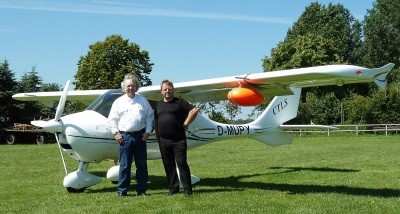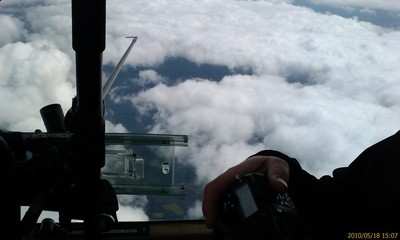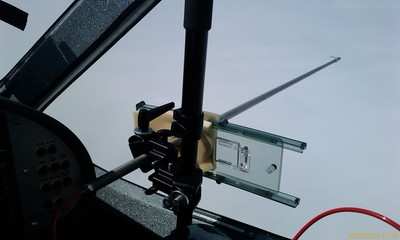Sat, Jul 02, 2011
Returns To Mission First Undertaken After 2010 Iceland
Eruptions
European travel was recently interrupted for a second year
by volcanic eruptions in Iceland. This time, it was the
Grimsvötn volcano that spewed ash into the atmosphere,
presenting a major expense for airlines and airports plus
inconvenience for passengers. The Eyjafjallajökull eruption,
in April 2010, caused the largest closure of European airspace
since World War II, with losses estimated at
between $2.2 and $3.6 billion.

To determine the extent of the problem as it compares to last
year, the Laboratory for Environmental Monitoring of the
Fachhochschule Düsseldorf (FHD) lead by Prof. Dr. Konradin
Weber conducted volcanic ash test flights over northern Germany,
especially in the region of Bremen, Hamburg and Schleswig,
Holstein, in a Flight Design CT microlight airplane. The London
Volcanic Ash Advisory Center had predicted significantly increased
volcanic ash concentrations for this region due to the eruption of
Grimsvötn causing airport closures as a safety precaution.
The test flights were carried out on behalf of the Deutscher
Wetterdienst (German Weather Forecast, the federal German
organization responsible for measurement of airborne radioactive
particles etc.). The aircraft selected for this measurement was a
high performance light aircraft called the Flight Design CT fitted
with a laser-based particle spectrometer (GRIMM OPC). After the
volcanic ash cloud from the Eyjafjallajökull volcano a year
ago this equipment was used successfully gaining international
attention. The aim of the 2011 testing flights over northern
Germany was to obtain data in-situ regarding the volcanic ash
cloud, and in particular to gain data on the level of concentration
and the distribution of volcanic ash. During the flight, ash
particles were collected from the air for later examination using
electron microscopy.

The research aircraft operated by Professor Weber and his team
detected structures of the volcanic ash cloud at an altitude range
2.300 to 3.200 meters. At this altitude, the volcanic ash cloud was
observed as a horizontal gray-brown seam. The volcanic ash
concentrations measured in the Bremen-Hamburg area proved to be
comparatively low. The cost to determine this was a fraction of the
expense if large aircraft were used for this investigation.
The next use of this equipment is planned for early July 2011.
"The Measurement campaign will run from 1 to July 10 at Etna
volcano in Sizilia, Italy," said spokesman Uwe Post.

"We are proud to help aviation safety in airliners through the
very economical use of our CT aircraft," reported Flight Design
GmbH CEO, Matthias Betsch. "While we enjoy flying our aircraft, our
personnel also use airline travel and we are pleased to help insure
their safe travel."
More News
Witness Reported The Airplane Was Flying Low And Was In A Left Bank When It Struck The Power Line Analysis: The pilot was on final approach to land when the airplane collided with >[...]
How To Get A Story On Aero-TV News/Feature Programming How do I submit a story idea or lead to Aero-TV? If you would like to submit a story idea or lead, please contact Jim Campbel>[...]
From 2012 (YouTube Edition): A Segment Of The Sport Aviation World That Truly Lives "Low And Slow" Pity the life of ANN's Chief videographer, Nathan Cremisino... shoot the most exc>[...]
Aero Linx: International Business Aviation Council (IBAC) IBAC promotes the growth of business aviation, benefiting all sectors of its industry and in all regions of the world. As >[...]
Execute Missed Approach Instructions issued to a pilot making an instrument approach which means continue inbound to the missed approach point and execute the missed approach proce>[...]
 NTSB Final Report: Cozy Cub
NTSB Final Report: Cozy Cub ANN FAQ: Contributing To Aero-TV
ANN FAQ: Contributing To Aero-TV Classic Aero-TV: Seated On The Edge Of Forever -- A PPC's Bird's Eye View
Classic Aero-TV: Seated On The Edge Of Forever -- A PPC's Bird's Eye View ANN's Daily Aero-Linx (04.29.25)
ANN's Daily Aero-Linx (04.29.25) ANN's Daily Aero-Term (04.29.25): Execute Missed Approach
ANN's Daily Aero-Term (04.29.25): Execute Missed Approach





